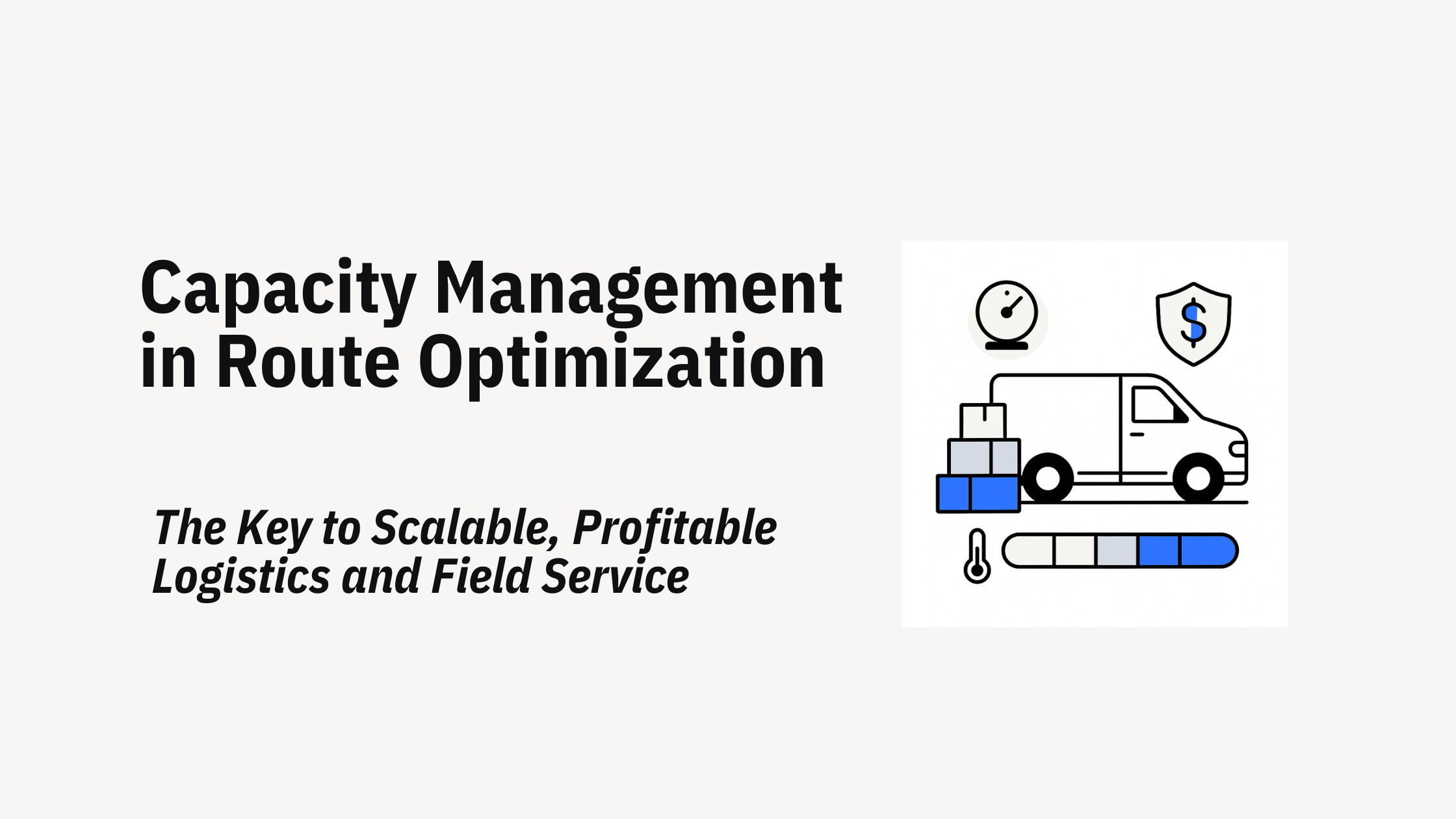Discover how scheduling and route optimization can revolutionize operations for tree care and landscaping businesses, enhancing efficiency and reducing costs. Perfect for CTOs managing large mobile workforces.

Before we dig into the solutions, let's take a gander at the challenges faced by tree care and landscaping businesses:
- Dispersed Job Sites: Crews often need to cover multiple sites spread across large areas, leading to potential inefficiencies.
- Time Management: Balancing job completion times with travel times can be a logistical nightmare.
- Resource Allocation: Ensuring each team is equipped with the right tools and personnel for the job.
- Environmental Factors: Weather conditions and unforeseen site issues can derail even the best-laid plans.
Scheduling and route optimization for tree care and landscaping businesses aren't just about plotting the shortest path on a map. It's about enhancing productivity, reducing fuel consumption, and ensuring customer satisfaction. For CTOs of large companies, this means leveraging technology to streamline operations and cut costs.
1. Increased Efficiency: By optimizing routes, crews spend less time on the road and more time on-site, increasing the number of jobs completed per day.
2. Cost Reduction: Less fuel consumption and fewer overtime hours lead to significant savings.
3. Improved Customer Satisfaction: Timely service and accurate ETAs improve client relationships.
4. Environmental Impact: Reduced fuel consumption means a smaller carbon footprint.
5. Data-Driven Decisions: Analytics provide insights into performance, helping refine operations further.
So, how do you implement a scheduling and route optimization API for tree care and landscaping businesses? Here's a step-by-step guide:
- Assess your current scheduling process.
- Identify bottlenecks and areas of inefficiency.
- Gather data on job duration, travel times, and resource allocation.
- Look for software that offers the flexibility to integrate a route optimization API
- Ensure integration with existing systems (e.g., ERP, CRM, payroll).
- Consider user-friendly interfaces for quick adoption by your team.
- Provide training on new tools and processes.
- Encourage feedback to tailor solutions to actual needs.
- Foster a culture of continuous improvement.
- Regularly review performance metrics.
- Make data-driven adjustments to improve efficiency.
- Stay flexible to adapt to changing conditions and business needs.
- Underestimating Change Management Needs: Ensure your team is comfortable with the new system. Use explainable AI features to smoothen adoption.
- Ignoring Data Analytics: Use analytics to drive continuous improvement.
- Overlooking Customer Feedback: Incorporate client insights to enhance service delivery.
Q: How can scheduling and route optimization improve job completion times?
A: By minimizing travel time and ensuring teams are equipped for each job, crews can complete more jobs in less time.
Q: What should I look for in scheduling and route optimization API?
A: Look for features like job relations, integration capabilities through an API, explainability, and real-time scheduling features.
Q: Can these solutions be scaled for different business sizes?
A: Absolutely! Whether you're a small enterprise or a large corporation, you can configure your solution to your needs.
In the competitive realm of tree care and landscaping, standing out requires more than just excellent service. It's about operational excellence, achieved through effective scheduling and route optimization. For CTOs managing vast mobile workforces, embracing these solutions isn't just a choice; it's a strategic imperative. By harnessing the power of technology, businesses can boost efficiency, cut costs, and deliver exceptional service—transforming challenges into opportunities for growth.
So, are you ready to revolutionize your operations? Dive into scheduling and route optimization for tree care and landscaping businesses and watch your efficiency soar!


